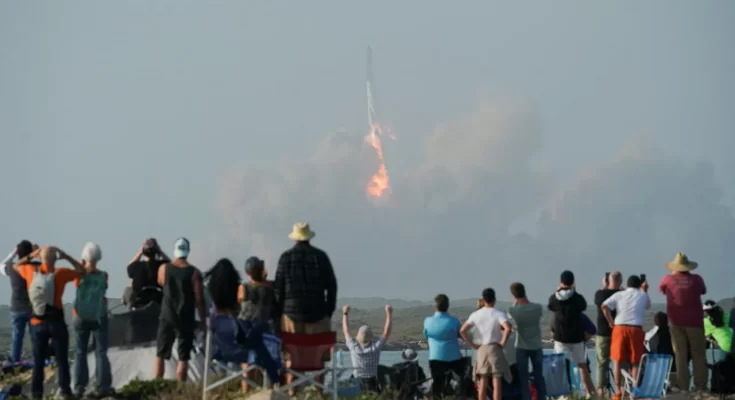SpaceX Starship, the most powerful rocket ever built, took off from a launch pad on the coast of South Texas on Thursday at 9:28 a.m. ET, but exploded midair before stage separation.
Thursday’s launch marked the vehicle’s historic first test flight. Although it ended in an explosion, Thursday’s test met several of the company’s objectives for the vehicle.
Clearing the launch pad was a major milestone for Starship.
Elon Musk congratulated the team on “an exciting test launch” in a post-launch tweet and said they “learned a lot for next test launch in a few months.”
The test flight comes after years of explosive tests, regulatory hurdles, and public hyping from Musk.
The company has been known to embrace fiery mishaps during the rocket development process.
Musk has talked about Starship — making elaborate presentations about its design and purpose — for years, and he frequently harps on its potential for carrying cargo and humans to Mars, though NASA also plans to use the vehicle to put its astronauts on the moon.
What is Starship?
Starship is a next-generation spacecraft designed to carry humans and cargo on long-duration, interplanetary flights.
SpaceX aims to use Starship for missions to the Moon, Mars, and beyond.
The massive Super Heavy rocket booster, which houses 33 engines, lifted off and sent a massive boom across the coastal landscape as it fired to life.
The Starship spacecraft, riding atop the booster, soared out over the Gulf of Mexico.
About two and a half minutes after takeoff, the Super Heavy rocket booster was scheduled to expend most of its fuel and separate from the Starship spacecraft, leaving the booster to be discarded in the ocean.
The Starship was meant to use its own engines, blazing for more than six minutes, to propel itself to nearly orbital speeds.
The flight reached its highest point 24.2 miles (39 kilometers) above the ground and the explosion occurred about four minutes after liftoff, according to SpaceX.
What’s next for Starship?
NASA has tapped SpaceX to provide a Starship lunar lander that would ferry astronauts from a separate spacecraft down to the moon’s surface for the Artemis III mission, which is currently scheduled for as early as 2025.
Before that mission can take off, however, SpaceX has to prove that Starship can make it to the moon — much less Mars, which is Musk’s ultimate ambition.
The sheer mass of the vehicle will force the company to refuel the spacecraft while it’s still in Earth’s orbit. More than a dozen launches — carrying nothing but propellant — may be required to give a single Starship lunar lander enough fuel to traverse the 238,900-mile (384,500-kilometer) void between Earth and the moon.
Before SpaceX can even hash out that process, it’ll also need to put Starship into orbit in the first place.
Thursday’s test flight only sought to get to near orbital speeds and make a partial lap of the planet — an achievement that will have to wait for a future test.
Even after flight tests begin to prove the vehicle’s design, the Starship spacecraft must be fitted with all the necessary life support equipment astronauts will need for a journey to deep space.





